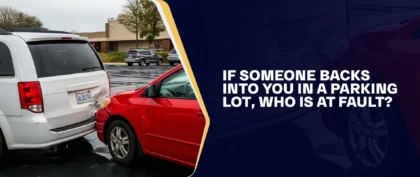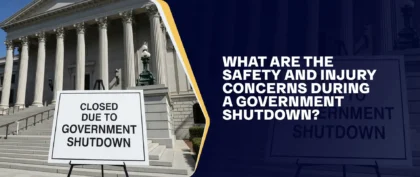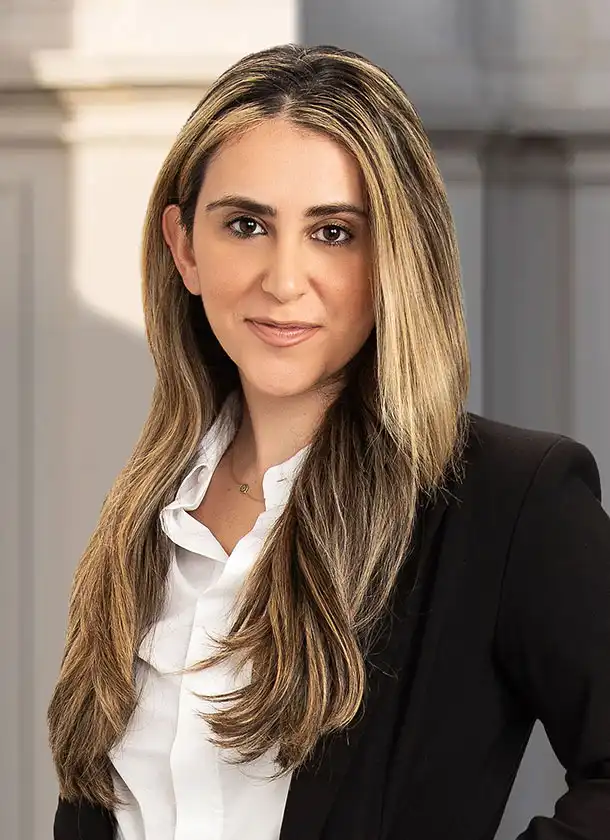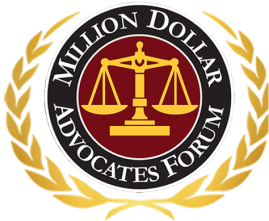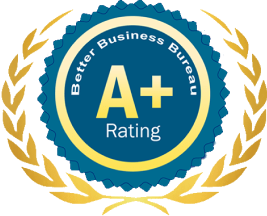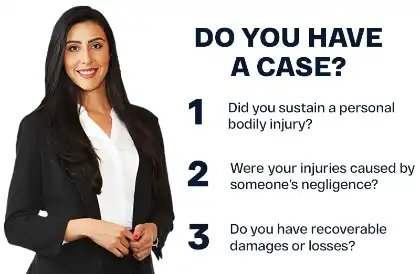Table of Contents
When purchasing a crib or other baby products, parents prioritize safety features above all else. Despite this, many nursery-related products, including cribs and even those from well-known brands, pose a significant risk to infants and small children. Thousands of cribs are recalled annually due to defects, but many are not recalled in time to prevent serious injuries and fatalities.
Due to defective designs and components, cribs can cause a variety of injuries and even fatalities. The manufacturer of a defective crib may be liable if a child is injured or killed by the product, as well as for failing to warn the consumer that the product is dangerous.
The Mystery Of Sudden Deaths In Babies
One of the biggest mysteries that continues to baffle parents and doctors alike is the unexpected deaths of babies while sleeping, even when the baby seems healthy. This is often referred to as Sudden Unexpected Infant Deaths (SUIDs). Since this phenomenon still demands further research and investigation, every parent’s worst fear for infants under one year old remains.
There are around 3,400 SUID incidents in the United States every year. While there is still a lot to uncover about these incidents, experts were already able to determine three common types. These are sudden infant death syndrome (SIDS), unknown causes, and accidental suffocation and strangulation in the crib.
In 2020 alone, 1,389 SUID cases were due to SIDS, 1,062 deaths had unknown causes, and 905 deaths were from accidental suffocation and strangulation in the crib.
To prevent these tragic deaths, parents and caregivers should observe safe practices, especially when putting their infants to sleep.
Choosing The Safest Cribs And Other Baby Products
Until your baby graduates to a bed, they’ll spend many hours in their crib, so you’ll want it to be just the right style, size, and color. More than anything else, you’ll want it to be safe.
When you are a new parent, the safety and well-being of your baby are your priorities. That safety is particularly crucial when your little one’s asleep.
You don’t want to overlook the safety of their crib. Before you get caught up in the stress, relax! We’ve laid down guides, tips, and tricks to promote safe and sound sleep for your baby. So, let’s start with the basics: crib safety.
Essential Crib Safety Standards To Look For
Before setting out on a shopping spree for your baby’s crib and other nursery furniture, here are the major certifications you have to look for to check that every piece of furniture you buy is safe for your baby:
U.S. Consumer Product Safety Commission (CPSC)
The CPSC mandates that all cribs sold in the United States meet its safety standards, which focus on the safety of a crib’s structure. The said commission has set strict regulations requiring cribs to be durable and safe for babies.
American Society For Testing And Materials (ASTM)
ASTM requires that no potentially harmful chemicals be used in the crib and its components, including the composites, wood finish, and glue. Currently, all cribs sold on the US market must comply with ASTM standards.
Juvenile Product Manufacturers Association (JPMA)
Another one you can look for is the JPMA certification, which confirms that the product meets the highest safety requirements. A JPMA-certified crib complies with all retail requirements enforced by federal and state laws, including ASTM standards.
Greenguard Gold Certification
The Greenguard Gold certification is not federally mandated, but it is a worthwhile addition when checking for quality. Greenguard evaluates the cribs during their manufacturing process. They aim to trace even the tiniest amounts of volatile organic compounds so your baby won’t inhale chemicals and pollution.
CPSC Crib Safety Standards
The CPSC has mandated that all cribs manufactured after July 2011 comply with strict safety standards. However, it’s important to still verify that your new crib complies with all these requirements to prevent SIDS and any crib-related injuries.
If you’re considering using an old crib, especially one manufactured ten years ago, thoroughly reviewing the crib safety checklist is crucial. Here’s what you have to check:
The Crib And Its Components Are Of The Right Size
- The crib bars or slats should not be 2 3/8 inches wide. They should also be complete, with no cracks.
- Crib rails should be 26 inches from the base of the mattress support when in their highest position.
- Corner posts should line up with the top of the headboard or end panels, or be much taller (more than 16 inches), so your baby’s clothes won’t catch on the post should they attempt to climb out.
- If you want to use an old crib with fancy finials or knobs, it’s advisable to remove them and smooth the posts again.
- Avoid cribs with headboards and footboards decorated with pretty cutouts. It’s also wiser and safer to refuse hand-me-down cribs with a drop-side.
The Hardware Is Firmly Secured
- The entire crib, including the sides and slats, should be sturdy with tight joints. The wood should also be free of cracks or splits.
- The crib hardware, such as bolts, screws, etc., should be securely fastened without sharp edges, rough spots, or other potential hazards.
- Try to avoid obtaining replacement parts for cribs from hardware stores. Instead, contact the crib’s manufacturer directly.
The Paint Is Non-Toxic
- The color of the crib’s paint is not the only thing you have to consider.
- A crib made before 1978 may contain lead in its finish, which poses a serious health risk to babies and young children. If you think your baby’s crib is lead-based, have it stripped, following the recommendations of the Environmental Protection Agency (EPA). After this, you may repaint the furniture using a high-quality lead-free enamel paint. Check the paint label to confirm that the paint is safe.
- Avoid using the crib if its paint is already peeling off or cracked. If you still want to use it, it’s recommended to have it refinished first.
The Mattress Fits Snugly Inside
- Make sure the mattress fits well inside the crib. To do this, try the two-finger test. Only two fingers should fit between the mattress and the crib. The mattress does not fit well if you put more fingers in the gap.
- Mattresses for full-size cribs should measure 27 1/4 inches by 51 1/4 inches and not exceed 6 inches thick.
- The mattress should be firm because soft mattresses are more likely to cause SIDS. Test the firmness yourself instead of relying only on the label. It should stay firm and spring right back if you push hard on it.
- Remove the plastic from a new mattress and discard it right away.
How To Shop For A Good Crib
Buying a crib in anticipation of the arrival of a new family member is exciting for many. However, an expecting parent may instantly feel overwhelmed with the available options. You can’t just go to a baby shop and choose the nicest and most comfortable-looking crib. Here are a few steps to remember as you purchase a crib for your little one:
Always Buy A New Crib
For your baby’s safety, only use a crib that meets current federal safety standards. Despite your family’s recommendation, stay away from vintage cribs. As such, drop-side cribs shouldn’t even be considered because, according to the US CPSC, this type of crib is less stable than those with four stationary sides. Additionally, it is ideal to buy cribs manufactured later than 2013 because it is more probable that they already adhere to the new standards set in 2011.
Furthermore, the structural integrity of a vintage or pre-owned crib may have deteriorated over time, putting the baby at even greater risk. Humidity, heavy use, and other factors can take their toll on your dining room table or sofa, but it is not worth the risk for a baby who cannot get out of a collapsing piece of antique furniture. You won’t need to worry about this if you buy a new crib.
Check If It’s Subject To A Recall
As a safety precaution, it is essential to check if the particular crib model you plan to buy is subject to any recalls. The CPSC maintains a database of recalled products, including cribs. You can search for your chosen crib model on their website or contact the manufacturer directly to verify its recall status.
If you discover that the crib is not listed as recalled, it should be a safer choice for your baby. Additionally, keep an eye on any future recalls, even after purchasing the crib, as new issues might arise over time. Registering your crib with the manufacturer can help you get timely updates and safety information.
Buy Only From A Reputable Retailer And Manufacturer
When selecting a crib, it is essential to choose products from trusted manufacturers and reputable retailers to ensure safety and quality. Look for established brands with a history of producing high-quality cribs and check for any recalls or safety issues associated with them. Purchasing from well-known retailers is also crucial, as established stores are more likely to carry products that adhere to current safety regulations.
Read customer reviews and ratings to gain insights into other parents’ experiences and identify potential issues with the crib or seller. Inquire about the manufacturer’s warranty and the retailer’s return policy to see if you have recourse if any problems arise. Proper crib assembly is also vital for safety. The crib should come with detailed instructions, and support should be available if needed.
Inspect The Crib Carefully
Before finalizing your purchase, look at all corners of the crib you want to buy. Check for sharp edges, exposed nails or screws, and other hazards that could harm your baby.
You might be concerned that your baby will bang their head against the crib slats. However, crib bumpers, which act as a fabric buffer between your baby and the slats, were banned in 2022. Focus instead on creating a safe sleep environment with a firm mattress and no loose bedding.
Skip The Accessories
When it comes to your baby’s sleeping space, remember that “less is more.” Your baby doesn’t need the coziest-looking set-up because that’s more dangerous for them.
The American Academy of Pediatrics (AAP) recommends that babies sleep in their beds on a firm mattress covered with a tight sheet. They do not need to buy pillows, blankets, positioners, bumpers, or stuffed animals. Sleep sacks and wearable blankets without weights are great choices for keeping your baby warm. The blankets should not be weighted. The added weight may put pressure on your baby’s chest and lungs, which can cause suffocation. Compression sacks and swaddles are also good, but only while your baby can’t roll over.
Choose The Mattress And The Sheet Meticulously
A full-sized crib mattress should fit snugly into the crib, with no gaps where the baby can get their head stuck. The CPSC recommends that full-sized crib mattresses be at least 27 1/4 inches wide and 51 1/4 inches long and should not be thicker than 6 inches.
You may also try the two-finger test to check the mattress size with the crib. If it fails the test, return or exchange the mattress for another that will fit your chosen crib tightly. Choose one that will fit the mattress tightly when it comes to sheets. Remember that, like adults, your baby can get tangled up in a loose sheet.
Buying A Crib Online Vs. In-Store
As with other commodities, you can shop online for nursery products, including cribs. While online shopping has advantages, many believe in-store shopping is still more exciting and reassuring. In the succeeding sections, let’s discuss the advantages and disadvantages of each one:
In-Store Shopping
Whether in a furniture showroom or on a store’s floor, seeing the crib in person has advantages. You can look at and examine the fully assembled crib, appreciate the colors, and feel the material’s finish. Some stores may allow or even encourage you to shake the crib if you wish to verify how stable and sturdy it is.
Once you decide to buy, the timeframe from purchase to delivery is significantly shorter. Returning the item, for whatever reason, is also easier since the store is a short trip away.
Online Shopping
On the other hand, online shopping gives you access to more options. Various nursery design ideas can also help you better visualize how the crib will look in your space. If you’re unsure how the finish will look, request a wood chip sample from the company. A wood chip sample can also help you determine if the finish matches the paint or bedding you picked.
Another aspect you can consider is the delivery time. Consider the possibility that a product or finish may be out of stock, delivery may be delayed, or a return and repurchase may be necessary. To give yourself a reasonable amount of time to handle any problems that might arise, conduct your research on cribs (and other newborn products) by the sixth month of your pregnancy and purchase a crib by the seventh month.
Factors To Consider When Buying A Crib
When choosing a crib, look for one that complies with safety standards set by various organizations, such as the CPSC, ASTM, JPMA, and Greenguard Gold. A safe crib comes with various features and styles, but here are the most important factors:
Durability
The crib you choose should last through the baby and toddler years. Verify that it is made from high-quality materials and designed to last. If you plan to purchase a used crib, remember that it may already have reduced durability. Check for cracks, dents, and outdated safety features.
Nonetheless, even a new crib needs to be sturdy and durable. To check the crib’s durability, look for stabilizer bars or check if the slats or bars don’t rotate or wiggle.
Materials
Choose a crib made of non-toxic materials and that has certifications from organizations like the Juvenile Products Manufacturers Association (JPMA) and Greenguard Gold. These certifications indicate that the crib meets rigorous safety standards and has been tested for harmful chemicals. Nontoxic finishes and paints are crucial, as they prevent exposure to potentially harmful substances.
Verify that the crib’s materials are free of lead, phthalates, and other toxic substances. Certified cribs promote safety and meet high standards for your baby’s health.
Versatility
Cribs vary in versatility. Convertible cribs can transform from a baby crib to a toddler bed, making them the most versatile type of crib. Additional parts, like toddler rails, may be required to achieve this adjustability.
Another versatile feature when choosing a crib is an adjustable mattress height. You can adjust to a higher option to feed your baby or comfort them when they can’t pull up. As your little one grows and begins to pull up or stand, you can lower the mattress to a safer height.
Crib Type
All cribs marketed in the US should comply with safety standards. However, this does not automatically mean that all cribs are the same. Instead, there are various types that you may see on the market. Here are some of the common ones:
- Standard — A standard crib is rectangular and fits standard crib mattresses. With a standard crib, your baby can comfortably sleep as they grow.
- Convertible — A convertible crib is the right choice if you want furniture that will grow with your baby. They’re the same size as standard cribs but can be converted into toddler beds, daybeds, or full-sized beds.
- Multi-Purpose — There are cribs with additional features, like drawers or changing tables, and they can be convertible cribs.
- Travel — Also called portable cribs, this option is ideal for those who value convenience and portability. These cribs often have wheels and can be folded for easier storage and movement.
- Mini — This type is perfect for room-sharing or small nurseries. Mini cribs are compact yet slightly bigger than a bassinet. However, a mini crib may not be big enough to accommodate babies who are almost ready to transition to toddler beds.
Crib Parts Specifications
Check each part of the crib carefully to confirm it meets relevant standards and has the right measurements.
- Corner Posts — According to the CPSC, a crib’s corner posts should be no more than 1/16th of an inch high. If they are larger, you risk catching your baby’s clothing. As a rule of thumb, corner posts should be flush.
- Side Rail — Side rails should remain in place, which is why drop-side crib rails have been banned since 2011. However, older cribs may still have drop-sides, so be extra cautious if you will use one for your baby.
- Mattress — Your baby’s mattress should fit their crib snugly. Most cribs use a standard mattress size, but mini cribs will require a mattress specific to their size. Pick a firm, non-toxic, water-resistant mattress with a fitted crib sheet.
- Slats — Crib slats should be less than 6 centimeters, or two and 3/8ths inches apart, the same width as a soda can. When your baby begins to move and explore, anything larger is a potential risk for their head to become stuck. The slats should also be tight and not wiggle.
Cost
Depending on the crib’s style and features, expect to pay between $100 and $1,000. Many cribs are in the middle of this price range. Portable cribs with mesh sides are more affordable, while standard-sized cribs made from durable and sustainable materials are more expensive.
As US cribs must meet certain safety standards, their cost will reflect other factors — aesthetics, construction quality, and ease of assembly. It is worth noting that a more expensive crib does not necessarily guarantee reliability and high quality. Don’t let price be the only deciding factor when choosing a crib.
Promoting Safe Sleep
Every parent’s priority for their children is safety, even as their babies sleep. To promote “safe sleep,” we pay attention to the sleep space (i.e., the furniture) and its conditions.
Setting Up The Crib
Proper crib assembly is just as crucial for your baby’s safety. Gather all the components together where you’ll assemble the furniture and read the manual carefully. Additionally, here are other things you have to remember as you set up your baby’s crib:
Assemble The Crib In Your Baby’s Sleeping Area
You should assemble the crib in the room where the baby will sleep. The AAP recommends that your baby sleep in your room during the first six months.
Moving the crib around once it is already assembled may cause some of the parts to loosen. Additionally, it may not fit through your doorways.
Take Account Of The Components
After setting up the crib, check if there are no loose bolts, screws, or other pieces that may catch on your baby’s clothing. Make sure no pieces are missing. Check the crib slats and mattress support slats for loosening or missing parts. If anything seems amiss, check with the manufacturer and ask for a quick fix.
Securely Place The Mattress And Sheet
Cribs with adjustable mattress support allow you to adjust the height based on your baby’s age. You can set the mattress at the highest level when your baby is still a newborn. Once they can stand, set the mattress at the lowest level. When they reach 35 inches tall or can climb out of the crib (whichever comes first), move them to a toddler bed or convert the crib into one.
As for the sheet, pull the corners as you make the baby’s bed so that it won’t fall off. For older sheets, check if the elastic is still intact.
Preparing The Environment For A Safe Sleep
In addition to a safe crib, you have to prepare the crib’s surrounding area. Check if it is safe and conducive to the baby’s sleep.
Keep Cords Away
Cribs should never be placed near windows with blinds, curtains, or baby monitor cords because they can strangle a baby.
Reduce The Volume Of Noise Machines
Ideally, the volume of noise machines should not exceed 50 decibels, or the volume of an average vacuum cleaner or hair dryer.
A 2014 study found that the noise level of 14 white noise machines at maximum output exceeded hospital-recommended levels. Because of this, the AAP recommends a distance of at least seven feet (200 centimeters) from a baby’s sleep space and a volume below the maximum setting.
Sleep In The Same Room But On Separate Beds
According to the AAP, parents should share a room with their baby for at least six months and up to one year. However, AAP and the National Institute of Child Health and Human Development’s public health campaign further stated that babies should be placed in a separate sleeping area rather than sharing a bed with their parents.
Many families choose to bed-share regardless of the potential risks. Some sleep separately for the first half of the night and then switch to bed-sharing at some point. This is especially common after nighttime feedings.
Be sure to remove all soft items and bedding from the bed before bed-sharing or if a caregiver falls asleep while feeding your baby in an adult bed. Doing so will reduce the risk of SIDS, suffocation, and other sleep-related deaths.
Lastly, research indicates that falling asleep with a baby in an armchair or sofa is more dangerous than in an adult bed.
Safe Sleeping Practices For Your Baby
SUID, previously known as SIDS, is one of the common causes of death in infants. After years of study, experts have found that most of these deaths are preventable. The key is to confirm that the sleeping space is safe so babies will not suffocate or strangle. Here are a few tips for a safe sleep:
The ABCs Of Safe Sleep
- Alone — Bed-sharing increases the risk of SUIDS and other sleep-related deaths. Hence, babies should sleep alone in their own space.
- Back — Babies should be placed on their backs whenever they sleep.
- Crib — The crib should be empty. There should be no accessories, such as bumper pads, pillows, or blankets. It should also be free of other things like stuffed animals, toys, diapers, diaper wipes, and other supplies. These could potentially cause suffocation.
How To Facilitate Safe Sleep
Here are some additional tips to help create a safer sleep environment for your baby:
- Place your baby in a crib with a firm mattress and a tightly fitted sheet. A bassinet, play yard, or crib with spindles not wider than 2-⅜ inches apart and without drop-down sides is also a good option. This designated sleeping area should be close to you while the baby sleeps.
- The crib should be properly assembled and sturdy, with tight joints.
- Don’t let your baby sleep on adult beds, couches, armchairs, or soft surfaces. Car seats and swings are also dangerous spots for the baby to sleep in, as they may suffocate. If they accidentally sleep on any of these, move them to their safe sleeping space.
- Do not let your baby share a bed with other children, pets, or even with you, as this also increases their risk of suffocation.
- Since breastfeeding decreases the risk of SUIDs, you may breastfeed the baby in bed with you. However, you should put them back in their safe space once you’re done nursing. If you’re feeling sleepy, immediately put your baby back in bed.
- Room sharing, on the other hand, is fine, provided that your baby sleeps on a safe and separate surface.
- Avoid using a blanket, and dress your infant in a sleeper instead. However, if you decide to use a blanket, only use a thin one and cover the baby up to their chest. Tuck the blanket around the crib mattress.
- You don’t need to put your baby on their side while they sleep. You don’t have to worry about them choking if they spit up.
- Don’t move your baby during sleep if they change positions.
- Decorate your baby’s room however you want, but keep the sleeping area bare.
Crib-Related Injuries
More infants die in cribs than in any other nursery product. Over the past two decades, crib-related incidents have led to hundreds of fatalities and tens of thousands of emergency room visits. Hence, there is a need for a federal safety standard for cribs, which was implemented on June 28, 2011. Considering this, all cribs manufactured after that date must comply with the standards, and buying, selling, or using cribs manufactured before that date is prohibited.
Following the implementation of the safety standards in 2011, the CPSC reported only 109 deaths related to cribs and mattresses between 2012 and 2014. Moreover, cribs were recalled, which happened three times in 2015.
Some of the hazards found in recalled cribs include drop-side and mattress support hardware failures, which can cause mattresses to fall or form gaps, posing suffocation hazards. The gaps between side rails and crib mattress supports, as well as the separation of crib slats from headboards, pose entrapment hazards. Other recalls were due to the following:
- Loosening and detaching spindles, which can cause falling and entrapment hazards.
- High lead levels in paint.
- Chipping paint, which can pose a choking hazard.
What Should You Do If Your Baby Is Injured In A Crib?
Consider these steps if your infant or toddler was injured in a crib or playpen:
Seek Immediate Medical Care For Your Child
It is especially important to seek medical attention if an infant or toddler has been injured. They are too young to communicate their injuries, and they may not be able to express their pain in the same way an older child or adult would.
If you suspect that your child has suffered any injuries as a result of a crib or playpen accident, see a qualified physician. In case you decide to pursue litigation down the road, your records of the incident and your child’s injuries can help your case. An injury lawyer can advise you on the other documents and evidence you may need.
Take Pictures Of The Product That Caused The Injury
Do not touch the product after it causes an injury. Keep the crib or playpen in whatever state it was in when the injury occurred. Photograph the product from multiple angles and take close-ups of any parts that may have broken off or otherwise appear defective. Your personal injury lawyer can use this documentation to support your case.
Do Not Throw Away The Crib
You should keep the defective product in your possession so that product defect experts can evaluate it. If the product has already been turned over to the CPSC, you can have it returned to you. Furthermore, if the product comes with any packaging or instructional material, it is important to find it because it can help determine if there is any defect.
Talk To A Product Liability Attorney
Product liability cases are notoriously challenging; experts in product design and production must analyze the design of a crib or playpen to determine whether the manufacturer violated safety standards.
If your child is injured by a defective crib purchased from a major retailer, such as Walmart, consulting Walmart product liability lawyers can help you understand your rights and explore potential claims against the manufacturer or seller.
Talking to an attorney handling personal injury cases is a good idea for several reasons. First, they have access to industry professionals. Second, they can connect you with other consumers with similar complaints. If money concerns you, note that these attorneys generally offer free initial consultations and work on a contingency fee basis. You won’t pay attorney’s fees unless they recover damages on your behalf. Please note that you may still be responsible for certain case-related costs.
A lawyer who handles personal injury claims can help you understand your legal options after your baby suffers harm from a crib or playpen. They can also assist you when filing a claim.
Crib Recalls
As a parent, you want assurance that the product you buy for your child is safe. Every parent desires to protect their children; hence, many parents do extensive research before purchasing a product for their child.
However, even some of the most trusted brands of children’s products can be dangerous. Millions of products intended for children and infants have been recalled after consumers purchased them. It is unfortunate that by the time a company decides to recall a dangerous or defective product, someone has already been injured or killed.
Why Do Companies Issue Crib Recalls?
A product sold to the public should be recalled if it is later found defective or unsafe. Various reasons have led to crib recalls and corrective actions, including:
- Failure to comply with safety standards.
- Risks of strangulation.
- Loose side rails, spindles, and slats that pose a risk of head entrapment.
- Suffocation risk.
- Potential choking hazards.
- An increased risk of falling.
- Folding drop gates pose a laceration risk when fingers get trapped.
A company may voluntarily recall hazardous products, or a government agency, such as the US CPSC, may require it.
Cribs are subject to mandatory standards, but only recently have efforts been made to strengthen those standards and require testing and verification. Federal law requires cribs to include assembly instructions, diagrams, and cautionary and warning labels.
Crib And Other Nursery Product Recalls
Room & Board Crib Mattress Recall
Restwell Mattress Co. issued a recall of the “Room & Board Natural Organic Latex and Spring Crib Mattresses” in August 2023 because the mattresses failed the required safety tests (e.g., the firmness tests and the required warnings and labels), posing a suffocation risk to infants. As of yet, no injuries have been reported.
The recall included two model numbers: Model No. 847564 — Natural Organic Latex and Spring Crib and Model No. 925869 — Natural Organic Latex Crib. These crib mattresses are 52 inches long and 28 inches wide. They have a white top and gray sides, with “Room & Board” embroidered on one end and the model name underneath.
Contact Room & Board using any of the following methods to request a full refund and arrange mattress pickup (free of charge):
- Toll-free phone number: (800)-301-9720 from 8 AM to 7 PM CT on Mondays through Fridays; from 10 AM to 5 PM CT on Saturdays through Sundays
- Email: shop@roomandboard.com
- Recall sites: restwellmattress.com/recall and roomandboard.com/product-recalls
- Main sites: restwellmattress.com and roomandboard.com (click on “Product Recalls” at the top of the page)
Pottery Barn Kids Penny Convertible Crib Recall
The Pottery Barn Kids of San Francisco, CA, recalled about 310 “Pottery Barn Kids Penny Convertible Cribs” in July 2023 due to the end panels becoming loose, exposing sharp edges, and posing a hazard to children. Two reports of the crib’s end panels separating have been made, but fortunately, no injuries have been reported.
This recall concerns cribs with the model number (SKU) 2850473 on the underside. These French white cribs are made of radiata pine with scalloped detail and can be converted into toddler beds. It sold for about $900 on www.potterybarnkids.com from September 2022 to April 2023.
Consumers should stop using the recalled cribs immediately and contact Pottery Barn Kids for a full refund or repair. For more information, you may also contact Pottery Barn Kids toll-free at (855) 801-9300.
Crate And Barrel Crib Recall
After reports that mattress support pins were not fitting correctly or falling out, Crate and Barrel recalled one of its cribs in 2022. The CPSC recall involves the Thornhill Dark Brown and Natural Baby Cribs, with model number 304-903 indicated on the mattress support board. They have a dark brown wash finish and gold-capped feet and were sold online at www.crateandbarrel.com from September 2021 to October 2022.
DaVinci Crib Recall
Thousands of DaVinci cribs were recalled in 2015 due to broken and detached mattress support brackets. The surface becomes uneven when the metal brackets connecting the mattress support to the crib break. This may endanger the infant inside the crib, as the infant may get trapped, fall, or be wounded by the metal bracket.
An additional 6,000 (plus 13 sold in Canada) DaVinci cribs were recalled in the same year. DaVinci’s parent company, Bexco, also recalled about 11,600 Bexco cribs in July 2015.
The specific model names and numbers for these recalls are the following: Reagan crib (model #M2801), Emily crib (model #M4791), Jamie crib (model #M7301), and Lind crib (model #M7391). The model and serial numbers and the manufacturer date are printed on the label affixed to the bottom right-hand side panel of the crib. Such DaVinci cribs were manufactured from May 2012 through December 2012.
Rockland Furniture Round Cribs Recall
A recall of Nan Far Woodworking’s Rockland Furniture Round Cribs was issued in 2013 due to potential entrapment, suffocation, and fall hazards. An estimated 3,900 cribs were sold exclusively at JCPenney.
Rails on the crib’s drop sides may malfunction, detach, or fail in some other way. Once a drop-side rail falls out of position, it creates a space where an infant or toddler can become wedged or entrapped. This poses a strangulation or suffocation risk, in addition to the fact that the infant may also fall out of the crib. A drop-side incident can also occur due to incorrect assembly or age-related wear and tear.
Simplicity And Graco Cribs Recall
According to the CPSC, the recall of the Simplicity crib involved thousands, possibly hundreds of thousands of cribs, but many had previously been recalled for other reasons. The issue mentioned concerns the mattress-support frame of Simplicity cribs, which can bend or detach, causing part of the mattress to collapse. One reported case involved an infant who suffocated after becoming trapped between the mattress and a collapsed crib frame.
Between February 2007 and March 2010, about 217,000 Graco-branded cribs and an undetermined number of Simplicity cribs were sold, the manufacturer of which is no longer operating. The CPSC says if you own one of these affected models, stop using it right away.
Stork Craft Crib Recall
The largest crib recall in history occurred in 2009, involving about 2.1 million drop-side cribs made by Stork Craft Manufacturing in British Columbia.
This joint recall by the US CPSC and Health Canada involves 1.2 million cribs in the United States and 968,800 in Canada. The cribs were manufactured between January 1993 and October 2009. Moreover, an estimated 150,000 cribs from this recall carry the Fisher-Price logo and were manufactured between October 1997 and December 2004.
These cribs were recalled due to the various hazards they pose to infants. Among the reported incidents was the detachment of the crib’s drop sides, for which the CPSC, Health Canada, and Stork Craft accounted for 110 cases — 67 in the US and 43 in Canada. There were also four incidents of suffocation, all of which were from the US. Additionally, 15 babies were reportedly trapped but survived nonetheless — 12 in the US and three in Canada.
Jardine Crib Recall
In 2008, the US CPSC recalled three models of Jardine cribs for being prone to entrapment and strangulation hazards due to the wooden crib slats and spindles breaking, resulting in a gap. The three recalled models are the following:
- Dark Pine Olympia Lifetime Crib (Model DA715BC) sold from February 2004 to January 2007.
- Antique Walnut Capri Single Crib (Model 0108L00) sold from July 2006 to November 2007.
- White Capri Lifetime Crib (Model 0308C00), sold from December 2005 to November 2007.
The CPSC has been notified of 19 incidents of crib slats breaking. Nine consumers reported that their infant or toddler broke a slat in the crib. Another 22-month-old child fell through the gap between crib slats when a slat broke. No injuries have been reported.
Delta Crib Recall
In 2008, Delta recalled almost 1.6 million cribs with drop sides sold from 1995 to 2007 because of two defects that can cause a baby to become entrapped between the mattress and the drop side. A recall was issued after the reported death of an 8-month-old girl, caused by a detached crib side due to missing safety pegs. The CPSC also received reports of two additional entrapments and nine incidents of side rail detachment.
The recall of an additional 600,000 cribs followed the death of an 8-month-old boy who suffocated after a spring-loaded safety peg malfunctioned, causing the detachment of the crib side.
In these cribs, the spring pegs at the base of each leg can become inoperative if pushed back into the lower track. As a result, the crib’s drop side can detach from the crib, entrapping the infant or toddler in a gap. This was the largest crib recall at the time.
Meiling Hou Baby Crib Bumper Recall
The CPSC recalled Meiling Hou’s crib bumpers in March 2023 for violating federal crib bumper regulations. Approximately 125 units of such bumpers were sold in the United States. The crib bumper may suffocate infants, especially if they roll or move in a way that obstructs their breathing.
It is recommended that consumers stop using the crib bumpers and contact Meiling Hou for a refund. Those who purchased the crib bumpers should cut the tie strings and email a photo of the destroyed product. Upon the company’s receipt of the photo, consumers will get a full refund.
If your child has suffered an injury or a wrongful death due to the crib bumper, consider speaking to a personal injury law firm. They can determine what legal options are available to you.
Fisher-Price 4-In-1 Rock ‘N Glide Soothers Recall
In June 2021, Fisher-Price and the CPSC announced a recall of approximately 175,000 Glide Soothers and Gliders after reports of infant deaths that occurred between April 2019 and February 2020.
The said recall was primarily due to the deaths by suffocation of infants in the 4-in-1 Rock ‘n Glide Soother. According to reports, the infants were placed on their backs, unrestrained in the Glide Soother, and were later found on their stomachs. Four infants died on separate occasions: a 4-month-old from Missouri, a 2-month-old from Nevada, a 2-month-old from Michigan, and an 11-week-old from Colorado.
While no deaths have been reported with the 2-in-1 Soothe ‘n Play Gliders, they were also recalled for their similar design and risk factors.
Rock ‘n Glide Soothers sold from January 2014 through December 2020 for about $108, while Soothe ‘n Play Gliders sold from November 2018 to May 2021 for about $125. These nursery products were made available in children’s products and retail stores nationwide and online, at Walmart and Target, and on Amazon.com.
Those who own these soothers should stop using them right away and get a refund from the company. Fisher-Price can be contacted by phone at (855) 853-6224 from 9 AM to 6 PM (ET) Monday through Friday or online; click on “Recalls & Safety Alerts” at the top.
Graco Strollers
The CPSC announced on November 20 that Graco is recalling nearly 5 million strollers. The reason is serious: the folding hinge on the sides of the stroller can pinch a child’s finger, posing a laceration or amputation hazard. So far, Graco has received 11 reports of injuries, including six fingertip amputations and four partial amputations.
There are 11 stroller models affected: Aspen, Breeze, Capri, Cirrus, Glider, Kite, LiteRider, Sierra, Solara, Sterling, and TravelMate. These strollers are all single-occupant types with a one-hand folding feature, and their manufacturing dates go back to 2000.
If your child has experienced an injury or loss of life from these recalled cribs and other nursery products, call a personal injury lawyer for information about your legal rights and options.
Nursery Product-Related Injuries
Strollers And Carriers
Although strollers and carriers are typically used to safely transport children, injuries may still occur when these products are used. Children under the age of five are at significant risk from stroller and carrier-related injuries, particularly those brought on by product falls or tip-overs.
The significant number of injuries associated with ubiquitous products shows the need to reduce their potential for injury further, even though overall injuries have already decreased over the 21-year study period. On average, U.S. hospital emergency departments treat two children aged five or younger every hour for carrier-related injuries.
There were mostly head injuries, which is concerning considering that brain injuries and concussions can have long-term effects on cognitive development in young children. One-third (35%) of carrier-related injuries are traumatic brain injuries (TBIs)/concussions.
The study found that falling was the most common cause of injuries, accounting for 67% of stroller injuries and 63% of carrier injuries. Another common cause is tip-over. Injuries resulting from tipping over accounted for 29% of carrier injuries and 16% of stroller injuries.
Get in touch with a lawyer who handles brain injuries and other types of personal injury claims. They can help you and your family pursue compensation after such incidents.
Baby Walkers
Baby walkers are safer nowadays than they used to be, but the risks outweigh any perceived benefits. According to research, these walkers are not beneficial for children learning to walk. While baby walkers allow parents to have their hands free, such products also allow babies to move faster than they can on their own, sometimes even faster than a parent’s reaction time. Additionally, babies may use these walkers to reach hot, heavy, or poisonous objects.
While some walkers have locking wheels to prevent spills, others can fit through doorways you wouldn’t expect. It’s advisable not to have them in the house, especially if you have stairs.
Considering the hazards mentioned above, the AAP recommends banning the manufacture and sale of baby walkers. Even with precautions, accidents can still happen, and injuries can be serious. In such cases, personal injury lawyers can provide guidance on legal options if a child is hurt due to a defective or unsafe baby walker.
Slings, Other “Baby-Wearing” Products
New research shows that slings and other popular “baby-wearing” products have sent thousands of infants to the emergency room in the past decade.
Between 2011 and 2020, more than 14,000 infants ended up in the ER due to injuries caused by a baby sling or other carrier. More than half of these injuries occurred when the baby fell out.
The most common injury was traumatic brain injury, which includes concussions and more serious head trauma. While some babies with those injuries were able to go home after being seen in the emergency room, about 21% had to be hospitalized.
Child Car Seat
Babies and young children in California must legally use boosters and car seats appropriate to their height, weight, and age. Children’s seats are designed to save their lives and prevent injuries. Nevertheless, defectively designed child car seats and boosters can cause serious injuries and even death to infants and toddlers.
Even though victims of serious car accidents often sustain some injuries, child safety seats, booster seats, and harnesses are designed to mitigate these risks and prevent small children from getting harmed. Often, manufacturers of car seats and child seats can be held legally accountable when they fail to consider child safety. Arash Law’s car accident lawyers can help you seek compensation against the potentially liable parties if your child was injured in a car crash.
Other Child Product-Related Injuries And Recalls
Magnetic Ball Sets
In December, the CPSC issued a surge of alerts about magnetic balls. These include nine different alerts and two recalls involving magnets that could seriously harm or kill children if swallowed.
“When high-powered magnets are swallowed, the ingested magnets can attract to each other, or another metal object, and become lodged in the digestive system. This can result in perforations, twisting, and blockage of the intestines, infection, blood poisoning, and death,” the agency warned.
It is estimated that 2,400 magnet ingestions were treated in hospital emergency rooms between 2017 and 2021. The CPSC also received reports of seven deaths associated with these magnets, including two outside the US.
Water Beads
Water beads are colorful, water-absorbing balls that look like candies and are sold as children’s toys. However, they are potentially lethal if swallowed, which is why federal safety officials, advocacy groups, and legislators have been the subject of alarm for some time. Unfortunately, despite CPSC warnings and recalls, major retailers, including Amazon, Target, and Walmart, still sell them.
Consumer Reports found expanded water beads in infants’ stomachs, intestines, ears, noses, and lungs after they were purchased as gifts for older siblings. According to the CPSC, roughly 7,800 people visited emergency rooms due to water beads from 2016 to 2022.
Bath Toys
In June, the distributor recalled about 7.5 million Baby Shark bath toys after 12 reports of children falling or sitting on them, resulting in impalement injuries, lacerations, and punctures to children’s genital, anorectal, and facial areas.
Hello Kitty Whistle, Happy Meal Toys
On November 10, 2014, McDonald’s announced a CPSC recall of Hello Kitty Whistle Happy Meal toys.
Two incidents have already been reported where parts of the whistle have detached from the Hello Kitty figurine and posed a choking hazard. One incident involved medical attention.
For more information, call McDonald’s at (800) 244-6227 or visit McDonalds.com. If your child has this toy, you can return it for a free replacement toy, yogurt tube, or apple slices.
Difference Between A Recall And A Ban
The CPSC issues a recall when an item on the market must not be used. If an item is recalled, the consumer is usually directed to return it or get a refund. On the other hand, manufacturers or retailers cannot sell banned items in the United States.
A series of crib recalls occurred around 2010 involving drop-side cribs made by various manufacturers. Among the remedies were replacement offers and parts that converted a drop-side crib into a stationary crib, and refunds. Drop-side crib owners were directed to contact the manufacturer or retailer to order replacement parts, a new crib, or refund instructions.
Nursery Product-Related Injury Statistics
The US CPSC released its annual Nursery Products Report on injuries and deaths associated with nursery products.
From 2018 to 2020, an average of 163 deaths each year were related to nursery products. 77% were related to cribs, mattresses, playpens and play yards, bassinets and cradles, infant carriers, and inclined infant sleep products.
Compared to 2020 (44,600) and 2021 (53,000), more than 59,000 nursery product-related injuries were reported in 2022 in emergency departments (EDs). Nevertheless, the low hospital visits in 2020 and 2021 may be due to COVID-19. In 2022, falls were the common cause of these injuries, affecting the head and face.
An estimate is that 91% of injuries reported to EDs are treated and released. Only 3% required hospitalization, and 2% required transfers. This trend has been consistent for the three covered years.
Products Liability Lawsuits For Baby Items
You may take legal action if a defective product injures your child. A product may be defective in at least one of these three aspects:
- Design Defects — In some cases, even a perfectly made product can endanger the end-user if it has a defect in its design. A product is unreasonably dangerous if it fails to perform in its intended manner.
- Marketing Defects — “Failure to warn” refers to actions taken during the supply chain. The product was properly designed, but there were no instructions or warnings, which made it unreasonably dangerous for its intended consumers.
- Manufacturing Defects — The manufacturer can be held liable even if the product was designed to be safe, but the result did not reflect that design.
Having a drop-side crib, for instance, would be a design defect since this type of equipment is inherently unsafe. However, if one of the slats on a stationary-side crib becomes loose, that might be a manufacturing defect.
Consider speaking with a personal injury attorney in your area if your child suffers harm due to faulty baby equipment. You can file a lawsuit, join a class action if one already exists, or file a complaint with the CPSC if there is one in your area that applies to your situation.
Claims Based On Injuries Involving Cribs
A manufacturer may be liable for any injuries caused by a poorly designed or constructed crib, such as when a child falls out of the crib or gets their head trapped in a gap. It may also result in liability if a crib manufacturer fails to provide adequate safety warnings and assembly instructions. Parents may still sue for product liability, regardless of whether the manufacturer has issued a recall.
In most personal injury cases, the claimant must show that the defendant acted negligently, which means they failed to use appropriate care. On the contrary, defective product cases are based on the strict liability theory. This means that manufacturers are responsible for any injury caused by product defects, regardless of how much care they take. As such, victims may be able to pursue compensation more easily under the strict liability theory.
An injury can cause a family both economic and non-economic harm. Medical treatment and hospitalization, along with any long-term disability costs resulting from an injury, can be considered economic harm. The pain and suffering experienced by children is often considered a non-economic harm.
In some cases, a personal injury lawsuit may result in a settlement between the manufacturer and the victim. When the settlement is reached, the victim usually agrees to release any further claims against the defendant. If the settlement funds are insufficient, then they may not be able to get additional compensation later in the case. Therefore, before accepting a settlement offer, parents should consider whether it fairly compensates for their child’s injuries.
Lawyers who handle personal injury claims can provide legal advice and guidance. They have experience negotiating with insurance companies to seek damages for medical bills, pain and suffering, and future medical needs. They can help the families of victims calculate fair compensation for their losses.
Can The Manufacturer Be Held Liable In Crib Accidents?
The manufacturer or company of the defective crib could be held liable if it is discovered that the crib was completely or partly to blame for your child’s injury or death. Personal injury cases can become extremely complex and usually require an in-depth investigation by a product defect lawyer.
There is generally a two-year statute of limitations, or time limit, for victims to file lawsuits against allegedly negligent parties. For injured minors, however, such a time limit is tolled (or paused) until the child reaches the age of 18, at which point the two-year clock begins. Working with experienced personal injury lawyers can help parents understand these timelines and take the necessary steps to protect their child’s legal rights.
Your Child May Be Compensated
If a defective crib injures your child, you may be able to file a claim for various damages. The impact on a child’s quality of life, injuries, medical costs, and future medical needs all play a role in determining injury lawsuit awards. To calculate the appropriate compensation amount, your personal injury attorney will review these factors, gather evidence, and consult with medical and financial experts. Injury attorneys can also negotiate on your behalf.
What Happens If My Child Is Hurt At A Friend’s House?
Getting hurt at a friend’s house is almost inevitable as a child grows up. Most of these are minor injuries that can be resolved with ice, bandages, and a hug. However, more serious injuries, such as bone breaks, deep cuts, and head injuries, may result in legal repercussions. It may be possible to seek compensation for medical costs and other losses if the friend’s parents were negligent in keeping their home and grounds safe. In these situations, a personal injury lawyer can help you understand your legal options and the potential steps for pursuing a claim, if applicable.
As careful as the family watching your child may be, accidents can happen. In such cases, the court may consider comparative negligence in deciding. Even though the other parents might have been negligent, the court may conclude that your child participated in the accident. They do so by going somewhere they were forbidden to go or touching something they were forbidden from touching. For example, in a dog bite case, it may have been the child’s intention to tease the dog.
California law, adopting the principle of “pure” comparative negligence, splits liability between the plaintiff and the defendant in such cases. Even if a parent or caregiver is partially responsible, for example, by assembling the crib incorrectly or using it against safety guidelines, they can still seek a portion of the damages. The settlement would be reduced by the percentage of fault assigned to them. So, if the parent is found 30% at fault, they may still be able to pursue 70% of the total damages.
Personal injury lawyers can help explain how fault is assessed under California law and provide guidance on how liability may be allocated between the parties involved. If you wish to file a claim for your injured child, our premises liability attorneys will help you navigate the legal process.
Why Should You Choose Arash Law?
When your child suffers serious injuries as a result of a defective crib, you should speak with an attorney who has handled numerous personal injury cases similar to yours.
At Arash Law, our personal injury lawyers have helped numerous clients in various personal injury cases. We are prepared to take your case to trial if necessary and pursue fair compensation on your behalf. Moreover, you don’t have to pay upfront fees. We take baby crib accident and injury cases on a contingency fee agreement. This means we do not collect any attorney’s fees upfront unless compensation is obtained. Please note that case-related costs may apply.
Frequently Asked Questions (FAQs)
Is Co-Sleeping Neglect?
Co-sleeping does not mean neglect, especially if there are no additional circumstances, such as drug or alcohol use. However, parents need to be aware that co-sleeping is risky. They may accidentally roll on their child, which may result in serious injuries or, worse, suffocation.
How Do I Make Sure My Baby Is Safe In A Crib?
Here are some practical ways to keep your baby safe in their crib:
- Whenever you are putting your baby to bed, place them on their back.
- Verify if the manufacturer hasn’t recalled the crib.
- Regularly check and tighten all screws and hardware.
- Baby’s crib should be bare, without bumper pads, soft bedding, or soft toys. Remove blankets, fluffy comforters, pillows, and plush toys. These items can cause your baby to suffocate.
- Remove their mobiles once your baby is five months old or starts pushing on hands and knees.
- Cribs should not be placed near windows or drapes. Cords from the window blinds and drapes could entangle your baby.
- Remove your baby’s bibs and necklaces before placing them in the crib.
- Do not use strings to hang toys.
- Choose sleepwear and sheets that are flame-resistant.
What Are The Safety Standards For Cribs?
As a quick rundown, the safety standards for cribs are as follows:
- The mattress should be firm and tight-fitting to prevent the baby from getting trapped between the mattress and the crib.
- There must be no missing, loose, broken, or improperly installed screws, brackets, or other hardware on the crib or mattress support.
- Gaps between crib slats should not exceed 2 3/8 inches (almost the same width as a soda can) so the baby won’t fit through. There should be no missing or cracked slats.
- No corner posts should be taller than 1/16th of an inch to prevent a baby’s clothing from catching.
- The headboard and footboard must be free of cutouts to keep babies’ heads from getting trapped.
Remember that if the crib is incorrectly assembled, has missing, loose, or broken hardware, or has broken slats, it can result in the baby’s entrapment (which can lead to strangulation) or suffocation.
How To Check If A Crib Is Safe?
The following are the specifications for a safe crib:
- The Crib Should Have No Drop-Side Rail — You should not buy or accept a used crib with a drop-side rail due to safety concerns. The US CPSC banned the sale of drop-side rails for safety reasons.
- Safe Slat Distance — For the safety of infants and toddlers, the distance between slats should not exceed 2-3/8 inches (6 centimeters).
- A Firm Mattress That Fits Snugly in the Crib — Soft mattresses may contribute to SIDS, while those that are not fitted may trap your baby. The mattress should be firm and spring back quickly if you press it at the center and on its sides. It should also fit tightly inside the crib. If you use a mattress pad, it should also fit snugly.
- Corner Posts Should Be at the Right Height — The crib’s corner posts must either be flush with the top of the headboard or over 16 inches (41 centimeters). Anything in between can cause strangulation.
If you’re opting for a used crib, check on the following as well:
- It Should Not Be Older Than Ten Years — Cribs that are too old may not be compliant with the latest safety standards. The crib slats may not be spaced enough, or there could be cutouts on the headboard or footboard. Additionally, cribs built before 1978 might have a lead-based finish. All these may harm your baby.
- Inspect the Crib’s Overall Condition — Even if the crib is relatively new, you still have to check its hardware, parts, and slats. Assemble it properly according to the instructions in the manual. If you need to make any repairs, use only manufacturer-supplied parts.
Where Is The Safest Place To Put A Crib?
The ideal place for your baby’s crib is in your room, within arm’s reach. It should be in the middle of the room, and any piece of furniture should be at least a foot away.
Try to avoid positioning your baby’s crib against the wall. Since the wall is an immovable object, it can cause various problems for your infant. For example, if their limbs get stuck in the crib bars, their skin could get pinched or trapped by the wall. This unfortunate accident may further lead to bruising, cuts, or, worse, fractures.
Suffocation is another potential hazard. Although the crib should be bare until the baby is at least two years old, some parents still place stuffed animals or blankets. Your baby may suffocate when they lean on these items, which may then be pressed against the crib and wall.
Also, keep your baby’s crib away from windows so they can’t reach the blinds or curtains. There have been cases of accidental strangulation, and this can be a huge hazard. Changing tables and dressers should also be kept away from the crib. These pieces of furniture may encourage your baby to jump out of the crib onto other items.
Is A Secondhand Crib Safe?
A secondhand crib may pose safety risks. Older models often fail to meet current safety standards and may have missing parts, loose hardware, or weakened structures that compromise stability. Whenever possible, choose a new crib that complies with the latest regulations.
What Is The Two-Finger Test For Cribs?
The two-finger test checks the mattress’s fit on the crib. To do this, try fitting two fingers between the mattress and the crib. If you can fit more, the mattress is not a good fit.
How Can You Reduce The Risk Of SIDS?
Place your baby on their back every time they sleep and create a safe environment. Additionally, here are evidence-based recommendations to reduce your baby’s risk of SIDS:
- Place your baby on their back for naps or nighttime sleep.
- Choose a firm, flat, level sleeping surface. Use a fitted sheet.
- Breastfeed your baby.
- For the first six months, give the baby a separate sleep space (crib, bassinet, or portable play yard) in your room.
- Avoid putting soft objects, toys, or other items in the baby’s sleep area.
- When the baby begins feeding well, offer them a pacifier for naps and at night.
- Don’t smoke or vape during pregnancy, and keep your baby’s surroundings smoke- and vape-free.
- Maintain a drug- and alcohol-free pregnancy; your baby’s caregiver should do so as well.
- Keep the baby’s face and head uncovered during sleep to prevent him from getting too hot.
- During pregnancy, seek medical care regularly.
- Follow your healthcare provider’s instructions regarding your baby’s vaccinations, checkups, and other medical care.
- Do not use products and devices that contradict safe sleep guidelines, including those that claim to prevent SIDS and other sleep-related infant deaths.
- Do not use any heart, breathing, motion, or other monitors for your baby.
- Remember that swaddling does not reduce the risk of SIDS. Hence, avoid swaddling, especially once your baby starts rolling over (usually at three months).
- When your baby is awake, give them plenty of “tummy time.” Someone should be watching closely during “tummy time.”
Is It Safe To Hang Anything Over A Crib?
Secure any mobiles you hang over your child’s crib to the side rails, wall, or ceiling. Hang them high enough so your baby can’t pull them down. Take it off when they are five months old or can stand on their hands and knees.
What Month Is The Risk Of SIDS?
Infants between one and four months old are the most likely to die from SIDS, and cases rise during cold weather. Moreover, babies have a higher risk of SIDS in these cases:
- Low birth weight or premature birth.
- They sleep on soft surfaces.
- They have soft objects or loose blankets and pillows when they sleep.
- They sleep in their parents’ beds.
- Their bodies become overheated as they sleep.
- They are exposed to tobacco smoke after birth.
- There is a history of SIDS in the family.
- The mother used drugs, smoked, or drank during pregnancy and after birth.
- There was a lack of prenatal care for their mother.
- Their mothers were under the age of 20 when they gave birth.
At What Point Is SIDS No Longer A Concern?
A large majority of SIDS deaths occur before babies turn six months old. SIDS becomes less common after eight months. Still, parents and caregivers should continue observing safe sleep practices to prevent SIDS and other sleep-related infant deaths until their baby’s first birthday.
Are All Drop-Side Cribs Unsafe?
Drop-side cribs are unsafe since these rails create a gap between the mattress and the crib. They increase the risk of the baby’s head getting stuck, which can lead to suffocation or death.
How Long Should You Keep Your Baby In A Crib?
The transition to a toddler bed should be gradual for toddlers around three years of age, although there is no specific age recommendation.
Nonetheless, your toddler’s height is the most important factor to consider. It’s time to move them to a bed once they reach 35 inches. When you have a convertible crib, you can easily transform it into a toddler bed with the required hardware. Through this, you avoid the cost and hassle of buying a new toddler bed. This helps you avoid the cost and hassle of buying a new bed and can also reduce your toddler’s resistance to the change, making the transition smoother.
How Long Does A Child Injury Lawsuit Take To Resolve?
A child injury lawsuit can last for several months or years, depending on the case’s complexity, how much negotiation will take place, and the court’s schedule. While some child injury lawsuits may be resolved quickly, others may take years. Attorneys who handle personal injury cases can advise you on how long your case will likely take based on its details.
Do I Need A Personal Injury Lawyer?
Even though minors cannot sue for personal injury, they may still be able to seek compensation for damages if another party causes them harm. Generally, parents or legal guardians can file a claim on behalf of their children. The custodial parent can file a child injury case when the parents are separated.
If your child is injured, an experienced personal injury attorney can help you seek compensation from all the responsible parties.
Did A Malfunctioning Crib Injure Your Child? We Can Help
No one wants to harm a child, especially an innocent infant. Sadly, accidents are inevitable. If your child is injured or suffers an untimely death, our accident lawyers are here to help.
As a personal injury law firm in California, Arash Law has helped parents and families pursue compensation for injuries and deaths caused by defective products. We have the resources and experience to handle complex personal injury cases. We are here to help if your child was injured due to a crib or another product intended for babies and kids. Call our personal injury attorneys at (888) 488-1391, and we’ll help you understand your legal options.
We also handle cases involving bicycle accidents, motorcycle accidents, pedestrian accidents, Uber accidents, truck accidents, workers’ compensation, and more.
Our attorneys provide legal representation to clients throughout California, including in Los Angeles, San Francisco, Lancaster, San Diego, Palmdale, Fresno, San Bernardino, Bakersfield, Anaheim, Oakland, and Fremont. We can arrange a consultation at a convenient location in California.





